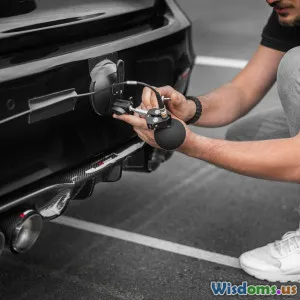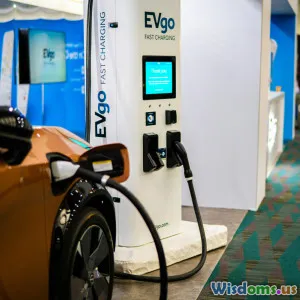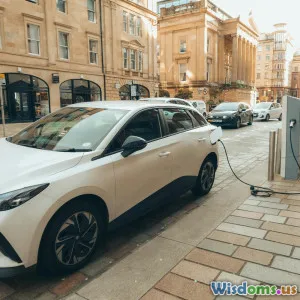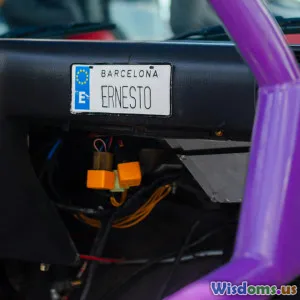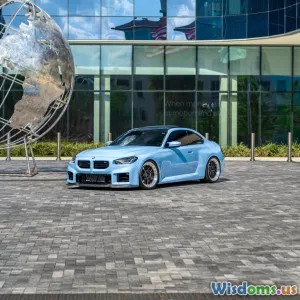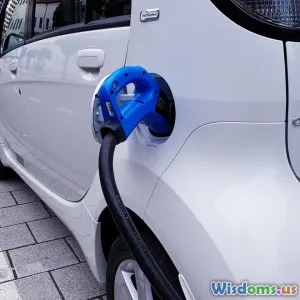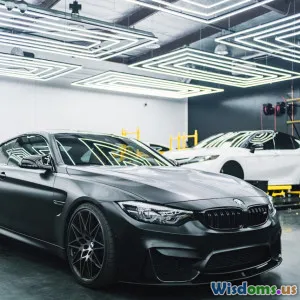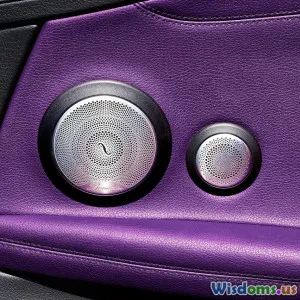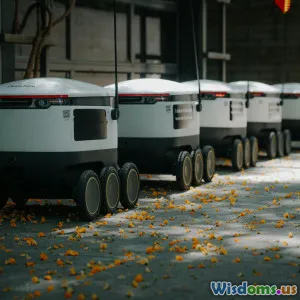
Five Automakers Leading the Race for Self Driving Technology
9 min read Explore how five leading automakers are pioneering self-driving tech shaping the future of mobility. (0 Reviews)
Five Automakers Leading the Race for Self-Driving Technology
As the automotive industry hurtles toward a future where cars drive themselves, the race for self-driving technology has become a defining battleground. With billions of dollars in investments, groundbreaking advances in artificial intelligence (AI), sensor technology, and vast data networks, several industry giants are positioning themselves at the forefront of this transformation. This article explores the five automakers leading this charge—delving into their technological approaches, real-world deployments, and long-term visions.
Introduction
Imagine a world where cars navigate complex city streets seamlessly, reducing accidents, traffic congestion, and freeing occupants from the stress of driving. This is not science fiction but an imminent reality thanks to advances in autonomous driving technology. While numerous players, including tech startups and traditional automakers, compete to shape this future, a select group stands out as the leaders driving innovation and practical solutions.
Which companies are shaping the future of autonomous driving? What technologies differentiate them— and how close are we to fully driverless vehicles? Let’s dive into the five trailblazers heading the charge.
1. Tesla: Pushing the Boundaries with Full Self-Driving
Tesla’s bold mission to accelerate the world’s transition to sustainable energy has an ambitious cornerstone: Full Self-Driving (FSD). Elon Musk’s company has disrupted the auto world by integrating advanced driver-assist systems directly into consumer vehicles via over-the-air software updates.
Pioneering Autopilot and FSD
Tesla's Autopilot, introduced nearly a decade ago, evolved from a basic adaptive cruise control to an advanced driver-assistance system capable of lane changes and auto-parking. Tesla’s FSD beta, currently in testing among select customers, incorporates deep neural networks and vision-centric approaches using cameras instead of traditional LiDAR, reducing hardware costs.
Real-World Impact
By early 2024, Tesla reported that over 400,000 cars globally operate using some level of Autopilot or FSD capability. Tesla collects massive amounts of real-world driving data, enabling continuous learning. Musk claims the full autonomy debut may be achieved soon, though regulatory approval remains a hurdle. Critics remain cautious due to reported incidents and the system’s limitation in complex environments.
Technological Edge
Tesla leverages a proprietary Dojo supercomputer to train its AI and optimizes sensor fusion primarily around cameras—a paradigm shift that contrasts with industry reliance on LiDAR and radar.
2. Waymo: The Autonomous Driving Veteran
A subsidiary of Alphabet Inc., Waymo has provided one of the most mature autonomous vehicle (AV) systems after more than a decade of focused R&D.
Industry-Leading Safety and Testing
Waymo’s self-driving cars have logged over 20 million autonomous miles on public roads, a testament to extensive real-world testing since its inception in 2009 as part of the Google Self-Driving Car Project. It deploys a sophisticated array of LiDAR sensors, radar, and cameras combined with high-definition mapping.
Commercial Deployments
Unlike many automakers, Waymo operates a commercial robotaxi service in Phoenix, Arizona. These driverless taxis, operating without safety drivers in select zones, represent one of the first scalable, customer-facing AV services in the world.
Holistic Approach
Waymo focuses heavily on safety validation and redundancy systems, often regarded as the industry gold standard. This methodical approach has earned Waymo partnerships with automakers like Stellantis and Jaguar Land Rover.
3. General Motors (Cruise): Urban Autonomous Mobility with Cruise
General Motors entered the autonomous race aggressively through its Cruise division, which specializes in creating driverless vehicles for urban environments.
Urban-Centric Strategy
Cruise focuses on navigating complex cityscapes like San Francisco, employing sophisticated AI, LiDAR, radar, and camera arrays. Its vehicles utilize advanced mapping and localized data specialization.
Investment and Partnerships
Backed by GM and tech giant Honda, Cruise operates a commercial robotaxi service and received regulatory approval to operate without safety drivers in San Francisco. GM’s commitment, underscored by billions of dollars in investment, signals its belief in autonomous mobility as a future pillar.
Real-World Scaling
Cruise announced plans for scaling robotaxi fleets and expanding geographic coverage, further signaling its drive to commercialize AV technology rapidly.
4. BMW: Precision Engineering and Collaborative Ecosystem
As a legacy automaker, BMW balances cautious innovation with their engineering heritage—investing heavily in autonomous technology with a vision focused on safety and driver assistance.
Advanced Driver Assistance Systems (ADAS)
BMW has introduced its Driving Assistant Professional, capable of Level 2 semi-autonomy with features such as highway assist and traffic jam assist. BMW collaborates in the larger automotive ecosystem—for instance, through the ACEA (European Automobile Manufacturers Association) and partnerships with Intel and Mobileye.
Technological Focus
Rather than pioneering fully driverless cars today, BMW emphasizes incremental integration and safety, integrating sensor fusion with cameras, radar, and Ultrasonic sensors. They also explore Level 3 autonomy, aiming for highly automated highway driving, expected in near-term future models.
Creations like the iNEXT
BMW's iNEXT electric SUV, slated for launch imminently, promises Level 3 and Level 4 autopilot capabilities demonstrating BMW’s readiness to scale autonomy alongside electrification.
5. Ford: Blue Oval’s Path to Autonomous Vehicles
Ford combines decades of manufacturing expertise with partnerships and heavy R&D investment in automated mobility.
Strategic Partnerships
Ford invested $1 billion in Argo AI, aiming to leverage its AV platform for robotaxis and commercial delivery vehicles. This approach accelerates its autonomous technology initiatives without building everything in-house.
Commercial Robotaxi Programs
Recently, Ford announced expansions of its pilot robotaxi services in Miami and Austin, showcasing intentions to scale autonomous ride-hailing services.
Future Outlook
By blending traditional automotive strengths with new tech partnerships, Ford aims to make self-driving tech mainstream and affordable while emphasizing safety and reliability.
Conclusion
The race for self-driving technology is far from a sprint; it’s a marathon blending innovation, regulatory navigation, and consumer acceptance. Tesla’s software-centric vision contrasts with Waymo’s rigorous testing and Cruise’s urban focus, while BMW and Ford demonstrate how legacy automakers are innovating incrementally and strategically.
Each leader brings unique strengths. Tesla's bold real-world beta testing pushes boundaries, Waymo’s comprehensive safety-first model sets high standards, GM's Cruise pioneers urban autonomy, BMW showcases precision engineering, and Ford uses partnerships to accelerate deployment.
While fully autonomous vehicles transforming daily life remain on the horizon, these five automakers represent the vanguard—fueling advances that promise safer roads, improved mobility access, and revolutionized transportation.
The road ahead is complex but thrilling. The convergence of AI, robotics, and automotive engineering promises a mobility revolution in the coming decade. As a consumer or enthusiast, staying informed about these innovators offers crucial insights into where transportation is headed—where your next car might just drive itself.
Written by an automotive technology enthusiast with insights from industry data and publicly available company updates as of mid-2024.
Rate the Post
User Reviews
Popular Posts










